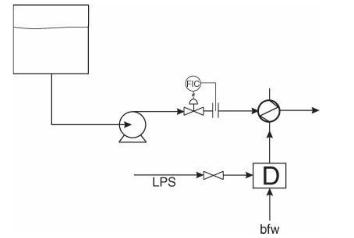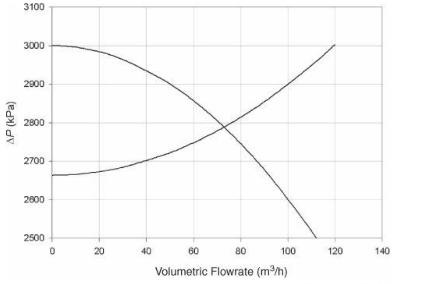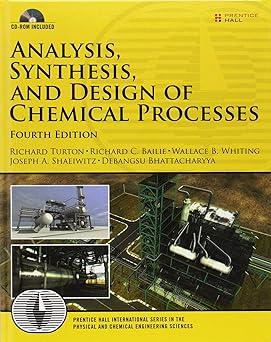A saturated liquid is stored in a tank in equilibrium with its vapor. The liquid is pumped
Question:
A saturated liquid is stored in a tank in equilibrium with its vapor. The liquid is pumped to a heat exchanger, where the liquid is vaporized. Frictional losses in the suction line to the pump are negligible; however, frictional losses after the pump are such that the liquid is saturated upon entering the heat exchanger. The heat exchanger vaporizes the saturated liquid to saturated vapor while condensing saturated steam to saturated liquid.
In the base case, the liquid vaporizes at \(130^{\circ} \mathrm{C}\), and the steam used is passed through a desuperheater to create saturated steam at \(155^{\circ} \mathrm{C}\) from saturated, low-pressure steam at \(160^{\circ} \mathrm{C}\). It is now necessary to increase the flowrate of the vaporized stream. Pump and system curves are provided in Figures P24.15a and P24.15b. Assume that the pressure entering the vaporizer remains constant.
Figure P24.15(a)

Figure 24.15 (b)

a. If the base-case flowrate is \(50 \mathrm{~m}^{3} / \mathrm{h}\), identify the bottleneck to process flowrate scale-up.
What is the maximum possible flowrate increase?
b. With scale-up, the frictional losses in the suction line to the pump increase. Is the pump in danger of cavitating? Explain your answer.
Step by Step Answer:

Analysis Synthesis And Design Of Chemical Processes
ISBN: 9780132618120
4th Edition
Authors: Richard Turton, Richard C. Bailie, Wallace B. Whiting, Joseph A. Shaeiwitz, Debangsu Bhattacharyya





